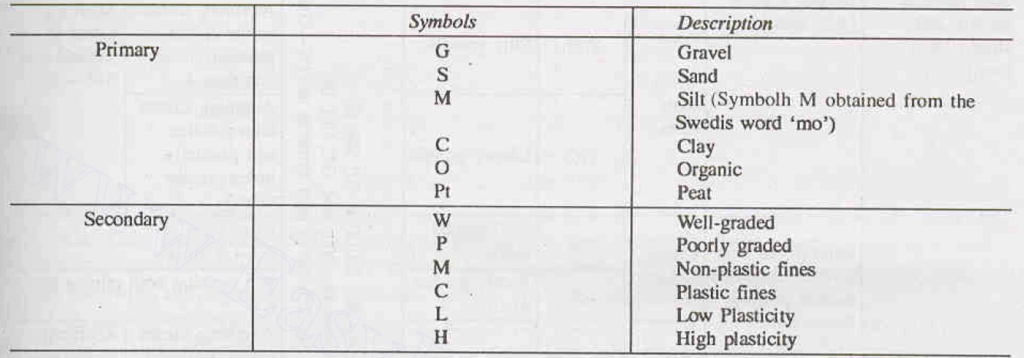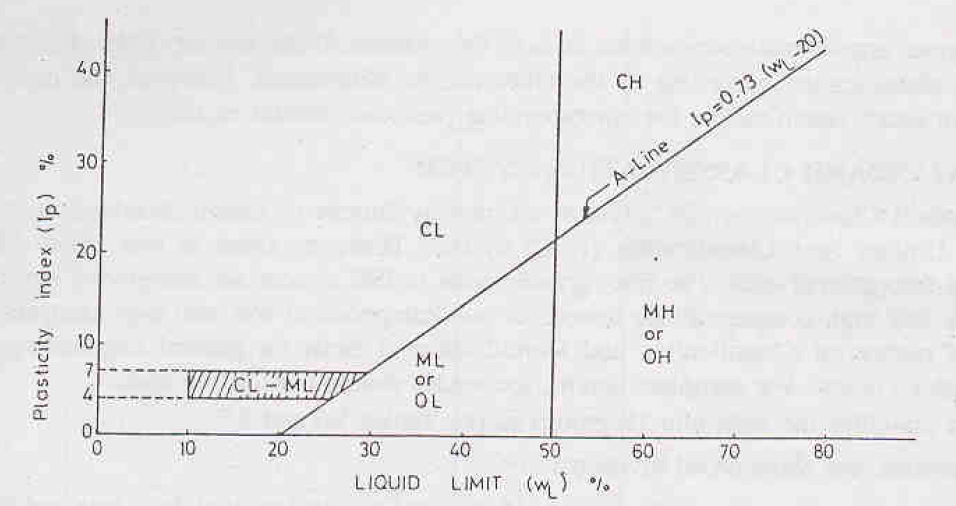Soil Classification

The main reason for classification of soil is arrange different kinds of soils into groups as indicated by their agricultural or engineering properties and different characteristics. The soils that possess the similar characteristics are placed in the same group. For different purposes the classification of soil and soil survey are carried out by several agencies. It is noticed by the engineers that classification of soil may be done with objective to find applicability of the soil for the construction of foundations, dams or highways, etc.
Generally, soils are classified into the following systems:
- Particle size classification
- Textural classification
- Highway Research Board (HRB) classification
- Unified soil classification
- Indian Standard classification
Particle Size Classification
In particle size classification system, according to the grain size the soils are arranged in which sand, gravel, clay and silt are some terms that are used to indicate grain sizes. Only as designation of particle size such terms are used and it do not signify the naturally occurring soil types which are particle mixtures of different characteristics and leaves the definite characteristics. The word ‘clay size’ and ‘silt size’ are preferably used in place of ‘clay’ or ‘silt’ in this system of classification of soil.
There are generally different classifications of grain size in use, but more commonly used systems are given as below:
- The United States Bureau of Soil and Public Road Administration System
- International soil classification of International Soil Congress at Washington, D.C.
- M.I.T. classification of Massachusetts Institute of Technology
- Indian Standard Classification based on M.I.T. System




Textural Classification
There are different percentage of silt, clay and sand particles in the soils that are occurring in the nature. The textural classification can be described as the classification of soil of the composite soils which are exclusively based on size distribution of particle. The triangular classification of soil is the best known textural classification which is based on the U.S. Public Roads Administration. This type of classification of soil is very suitable for defining coarse grained soils than the clay soils which have independent properties on size distribution of particle.
Highway Research Board Classification
The HRB classification system is applicable for classification of soil for highways that is based on particle size composition and plasticity characteristics. It is commonly known as Public Road Administration (PRA) classification system. The Highway Research Board classification of soil is also said as American Association of State Highway and Transportation Official (AASHTO) classification system.
For the pavement construction this system is commonly used. In this system of classification of soil the soils are divided into 7 groups, which are as A-1, A-2, A-3, A-4, A-5, A-6 and A-7; where A-1 group is divided into 2 sub-groups and A-2 group is divided into 4 sub-groups. For pavement constructions the group index characteristics is used to define the performance of the soils. To place a soil in particular group, group index is not used. is it actually used for rating the value of a soil into subgrade material within its own group. As high as the value of the index will be, the quality of the material will be the poorer.
The group index of a soil is depending upon the following:
- The amount of sample passing the 75 micron IS sieve
- The liquid limit
- The plastic limit
These are given by the equation, Group Index = 0.2 a + 0.005 ac + 0.01 bd
where, a = the portion of percentage passing by 75 micron that is greater than 35 micron and it does not exceed 75 micron is expressed as a whole number (0-40)
b = the portion of percentage passing 75 micron that is greater than 15 micron and it does not exceed 55 micron is expressed as a whole number (0-40)
c = the portion of numerical liquid limit that is greater than 40 micron and does not exceed 60 micron is expressed as positive whole number (0-20)
d = the portion of numerical plasticity index that is greater than 10 micron and does not exceed 30 micron is expressed as a positive whole number (0-20)
Unified Soil Classification
In 1948, Casagrande developed this system known as Unified Soil Classification System (USCS). In 1952, this system was modified by Bureau of Reclamation and Corps of Engineers of USA. This system is adopted by American Society of Testing Materials (ASTM) and Bureau of Indian Standards has also adopted this system. This is the most commonly used system amongst the classification of soil for all the types of soil engineering problems. The symbols that are used in the system are given below.

There are 4 major groups of various soils, such as, Fine grained soils, Coarse grained soils, Organic soils and Peat. Thus, in this system of classification of soil the groups of soils are classified into 15 groups. There are 8 groups of coarse grained soils, 6 groups of fine grained soils which also includes the organic soils and 1 group of peat. The two primary categories of soils are Fine grained soils and Coarse grained soils.
Fine Grained Soil
If more than 50% of the soil sample passes through the 75 micron sieve then the soil is termed as fine grained soil. Based on the plasticity index and liquid limit, fine grained soils are divided into two terms, such as, clay and silt. In this group the organic soils are included as well. The fine grained soil is further divided into two types, such as, (i) if the liquid limit is 50% or less these soils are of low compressibility, (ii) if the liquid limit is more than 50% these soils are of high compressibility.
From a plasticity chart the exact type of soil can be determined. The A-line has the equation IP = 0.73 (WL – 20) which separates the clay from silt. By doing oven drying, the distinction between the organic and inorganic soils can be made. The soil is classified as organic soil if the liquid limit is decreased by 30% or more in oven drying, or else it is inorganic soil. The highly organic soils are identified by visual inspections which are termed as peat.

Coarse Grained Soil
If soil retained on 75 micron sieve is more than 50% then it is designated as coarse grained soil. If 50% or more of coarse fraction i.e., 75 micron plus samples, are retained on 4.75mm sieve then these coarse grained soils are designated as gravel, or else it is termed as sand. If coarse grained soils are well-graded and less than 5% fines, then the symbols given to these are GW and SW and if these are poorly graded then the symbols given to these are GP and SP.
If the coarse grained soil contains more than 12% fines then they are symbolized as GM, GC, SM or SC. If the percentage of fines are between 5-12% then in such case dual symbols are used such as, GW-GM and SP-SM.
Indian Standard Classification
This system of classification of soil was first developed in 1959 and a revised system was developed in 1970. The Indian Standard Classification system that was adopted by Bureau of Indian Standards is similar to many respects to USC system. Between these two systems there is one basic difference in the classification of fine grained soils. In ISC system the fine grained soils are divided into three categories such as, low, medium and high compressibility but in USC system it is divided into two categories such as, low and high compressibility. In Indian Standard Classification system the soils are divided into three broad divisions:
- If 50% or more of the total soil sample by weight is retained on 75 micron IS sieve, then it is coarse grained soil.
- If more than 50% of the total soil sample passes 75 micron IS sieve, then it is fine grained soil.
- If the soil is highly organic and contains a large percentage of organic particles and maters of decomposed vegetation, then it peat.
Therefore, we have known that the classification of soil can be classified into five categories.
Learn more about Soil Engineering.
For more engineering terms click here.
